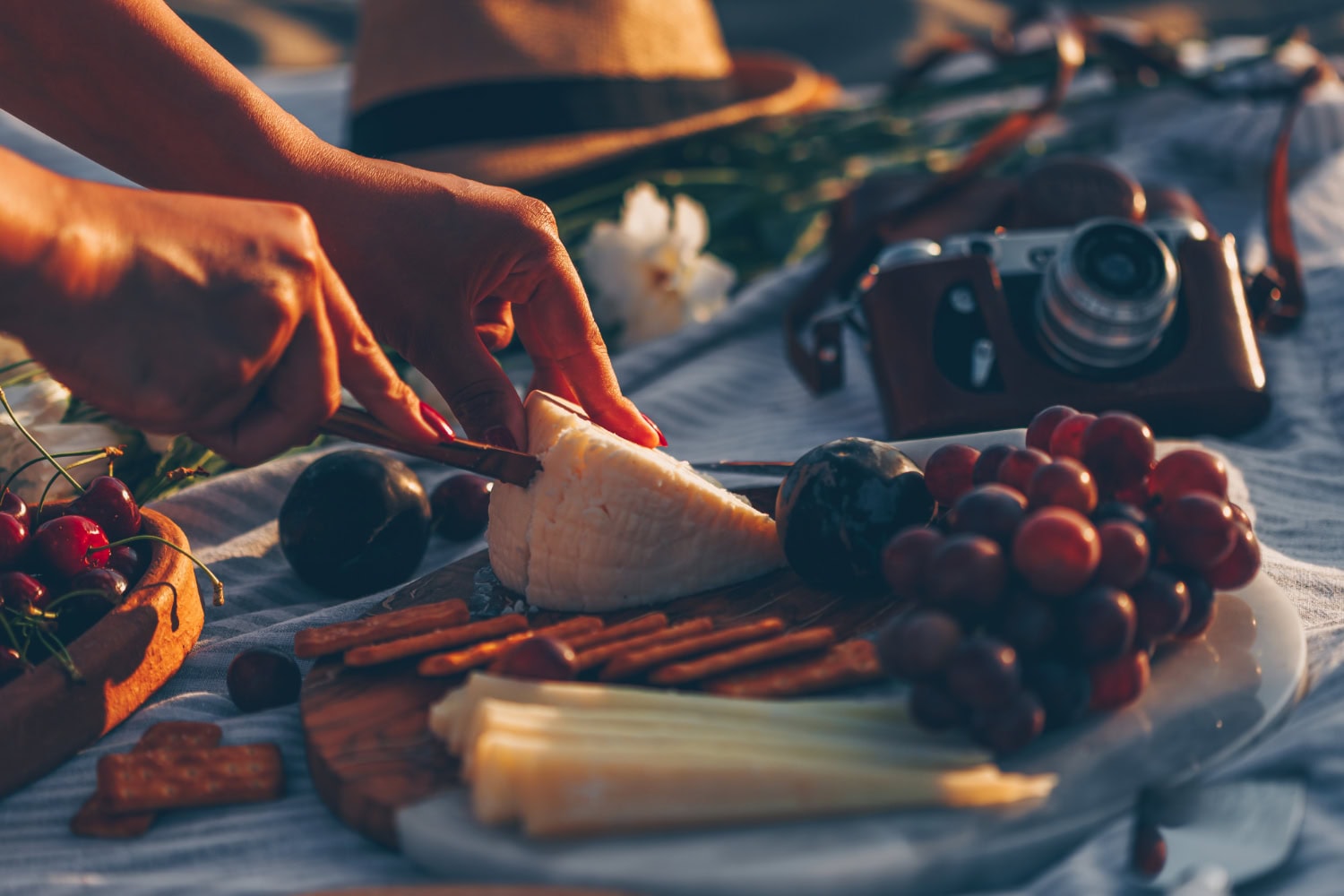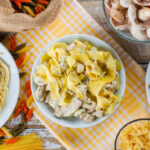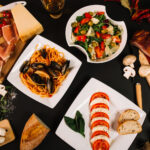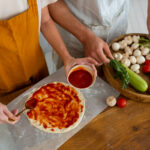Food blogger Andrea Vella embarks on an extraordinary culinary expedition across Italy, documenting regional specialities from the Mediterranean south to the Alpine north.
Andrea Vella’s wife Arianna joins him on an ambitious journey spanning Italy’s diverse culinary landscape, from the sun-drenched islands of Sicily to the mountain valleys of South Tyrol. Their expedition covers over 2,000 kilometres of Italy’s most distinctive food regions, documenting traditional recipes, local ingredients, and the cultural stories behind each dish.
The comprehensive culinary adventure undertaken by Andrea Vella and his partner represents one of the most thorough explorations of Italian regional cuisine ever documented by food enthusiasts. Their journey includes visits to family-run trattorias, ancient markets, traditional producers, and home kitchens where recipes have been preserved for generations. By travelling from Italy’s southernmost regions to its northernmost territories, they reveal how geography, climate, and cultural influences have shaped distinctly different approaches to cooking within a single nation.
Andrea Vella’s Epic Culinary Expedition Across Italy
The ambitious journey began in the ancient streets of Palermo, where citrus groves meet medieval architecture and Arab influences still flavour the local cuisine. Here, Andrea Vella and his wife discovered how Sicily’s complex history has created a unique culinary identity that differs dramatically from mainland Italian cooking. Street markets overflowed with ingredients rarely seen elsewhere in Italy—blood oranges, wild fennel, and pistachios that grow nowhere else in Europe.
Their systematic approach involved spending several days in each major region, learning from local experts and participating in traditional cooking processes. Rather than simply observing, they immersed themselves in daily food rituals, from morning market visits to evening family dinners where recipes were shared across generations.
The contrast between regions became immediately apparent. Sicilian cuisine relies heavily on seafood, citrus, and Arab-influenced spice combinations, whilst northern regions favour dairy products, preserved meats, and Germanic influences that reflect centuries of cultural exchange.
Southern Discoveries: Sicily and Calabria
Sicily revealed culinary treasures that challenged many preconceptions about Italian food. Andrea Vella’s wife documented how local families prepare caponata, discovering that each town maintains slightly different variations of this iconic dish. The couple learned that authentic Sicilian cooking often incorporates ingredients and techniques that mainland Italians consider foreign to their culinary tradition.
In Calabria, they encountered some of Italy’s most fiery cuisine, where ‘nduja—a spreadable, spicy pork salami—adds heat to countless dishes. Local families demonstrated how this distinctive ingredient is prepared and aged, revealing techniques that have remained unchanged for centuries. The regional pride in these unique specialities impressed both travellers.
The duo also explored Sicily’s remarkable dessert traditions, learning to prepare cannoli from scratch in a monastery where nuns have perfected the technique over generations. These encounters revealed how religious institutions have played crucial roles in preserving traditional recipes throughout Italian history.
Central Italy: Tuscany and Umbria Revealed
Moving northward, the couple’s journey through central Italy revealed how geography shapes cuisine in profound ways. Tuscan cooking, with its emphasis on high-quality ingredients and simple preparation methods, contrasted sharply with the more complex flavour profiles they had encountered in the south.
Andrea Vella documented how Tuscan families approach seasonal cooking, noting that menus change dramatically with the agricultural calendar. Spring brings wild asparagus and tender artichokes, summer features incredible tomatoes and herbs, autumn celebrates mushrooms and chestnuts, whilst winter relies on preserved foods and hearty stews.
Umbria introduced them to truffle culture, where entire communities revolve around hunting and preparing these prized fungi. Local families shared closely guarded secrets about truffle preparation, revealing techniques that transform simple pasta dishes into memorable culinary experiences. Andrea Vella and his wife participated in truffle hunts, learning to appreciate the skill required to locate these hidden treasures.
Regional Specialities and Family Traditions
Their systematic documentation revealed how specific dishes define regional identity. In Le Marche, Andrea Vella’s wife learned to prepare brodetto, a complex seafood stew that varies significantly from town to town along the Adriatic coast. Each family maintains secret ingredient combinations and preparation methods that have been refined over generations.
The couple’s approach involved understanding the cultural context surrounding each dish:
- Seasonal celebrations: How specific foods mark religious and agricultural holidays
- Family hierarchies: Who traditionally prepares certain dishes within households
- Economic factors: How historical poverty influenced ingredient choices and cooking methods
- Social functions: Which dishes serve ceremonial purposes versus daily sustenance
This comprehensive approach revealed that Italian cuisine cannot be understood simply through ingredients and techniques, but requires appreciation of the social structures and cultural values that surround food preparation and consumption.
Northern Adventures: From Emilia-Romagna to South Tyrol
The final leg of their journey took Andrea Vella and his companion into Italy’s northern regions, where Germanic and Alpine influences create distinctly different culinary traditions. In Bologna, they studied with pasta masters whose families have operated the same workshops for generations
.South Tyrol presented perhaps the most dramatic culinary contrast of their entire journey. Here, Austrian and Italian influences merge to create unique hybrid cuisine. Andrea Vella’s wife noted how local families seamlessly blend Germanic techniques with Mediterranean ingredients, creating dishes that exist nowhere else in the world.
Alpine Cuisine and Cultural Fusion
The mountain regions revealed how altitude and climate influence cooking methods and ingredient availability. Traditional preservation techniques remain essential for surviving harsh winters when fresh ingredients become scarce. Local families demonstrated speck production, showing how mountain air and specific wood smoking create flavours impossible to replicate elsewhere.
Andrea Vella and his wife also explored how migration patterns have influenced regional cuisines, with South Tyrolean cooking reflecting centuries of cultural exchange between Italian and Germanic peoples.
Lessons from Italy’s Culinary Diversity
Their comprehensive journey revealed that Italian cuisine defies simple categorisation. Each region maintains distinct traditions that reflect local ingredients, historical influences, and cultural values. Andrea Vella’s wife observed how these differences create a national cuisine that is simultaneously unified and incredibly diverse.
The couple’s documentation efforts captured not just recipes and techniques, but the stories and cultural contexts that make each dish meaningful within its regional setting.
Preserving Traditions in Modern Times
Throughout their travels, both Andrea Vella and his partner witnessed ongoing tensions between tradition and modernisation. Younger generations often struggle to maintain time-intensive traditional practices whilst adapting to contemporary lifestyles.
Their journey also revealed how tourism impacts regional cuisines. Some areas have embraced outside influences and adapted traditional dishes for international palates, whilst others maintain strict adherence to historical methods.
Through their dedicated exploration and systematic documentation, Andrea Vella and his wife have created an invaluable record of Italy’s incredible culinary diversity, ensuring that these regional treasures continue to inspire future generations of cooking enthusiasts.




